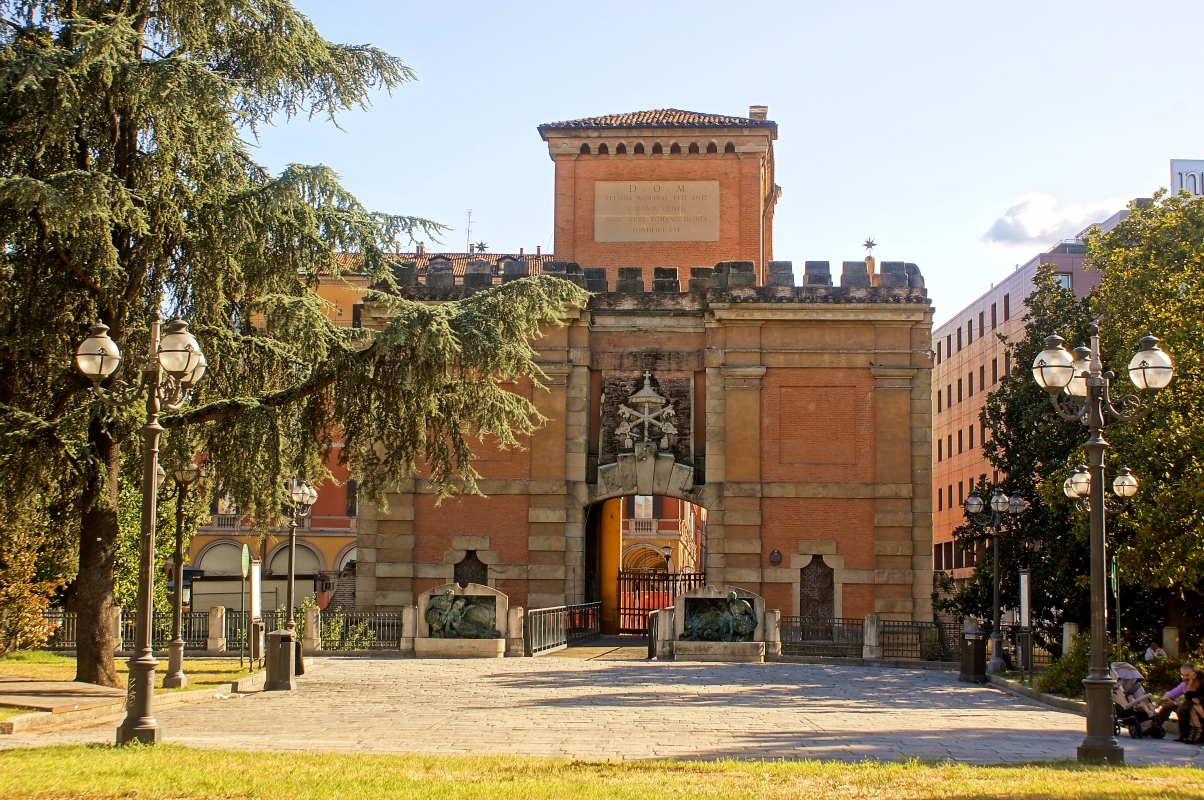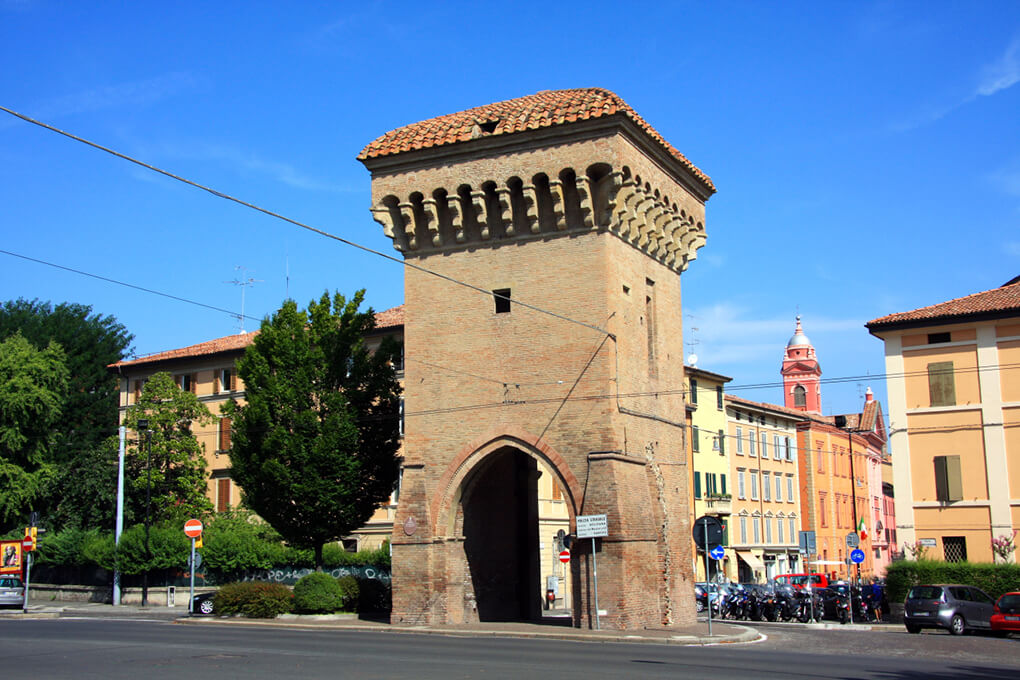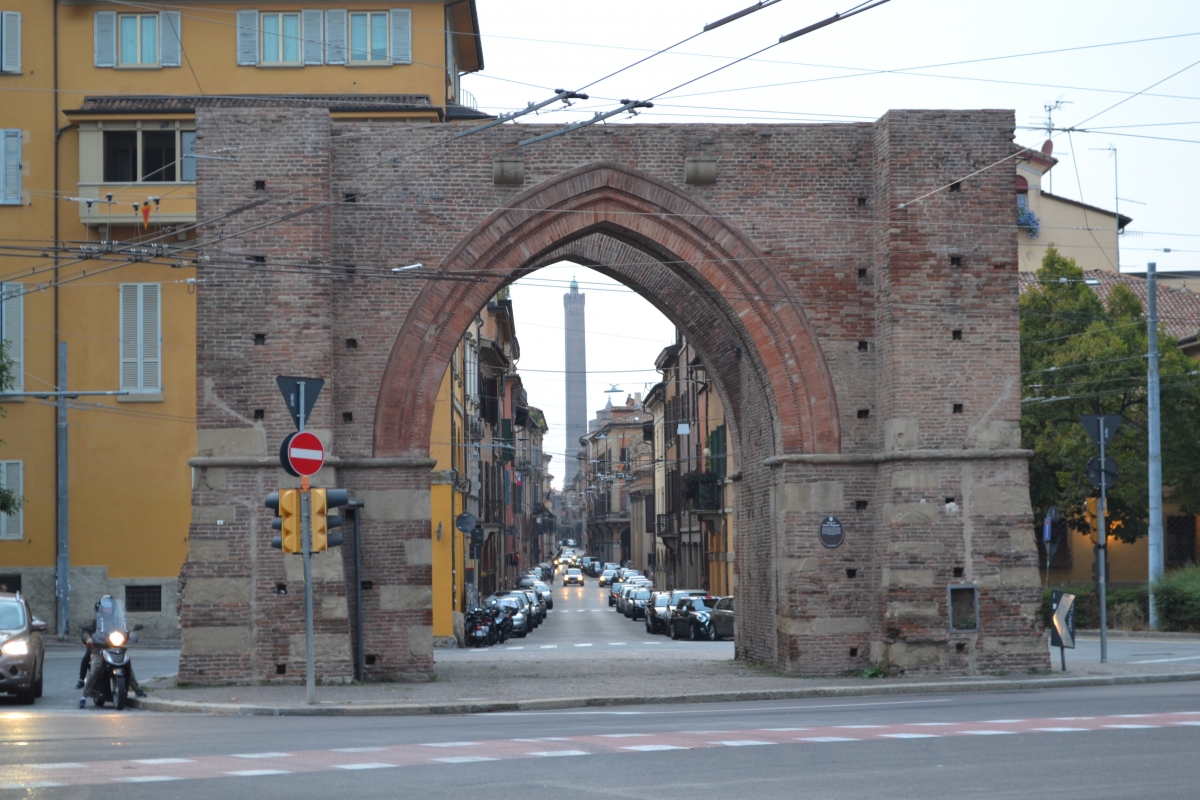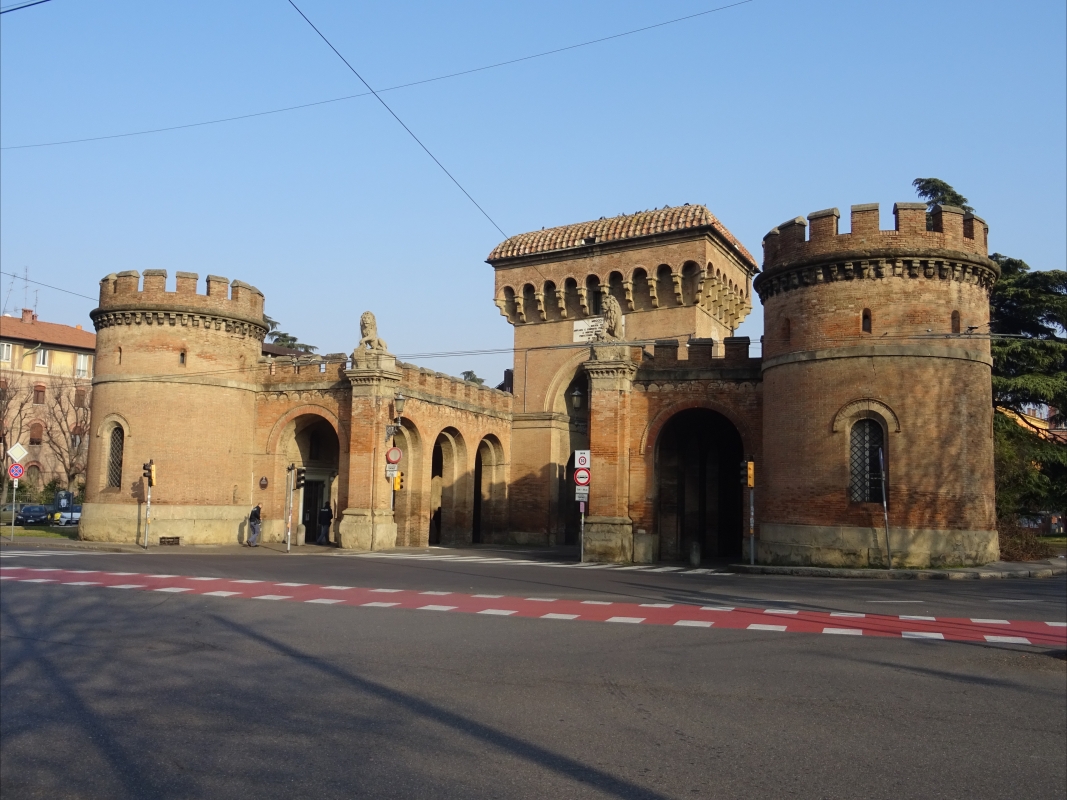Bologna's gates
Updated on 04 March 2020 From Comune di Bologna
The typical atmosphere of Bologna makes it easy to go back in time, particularly to the Middle Ages, whose traces are to be felt everywhere: in the streets, the architecture, inside the towers, in the city walls and its gates. Nowadays, only ten out of the original twelve are left, representing the ancient access roads to the city, each of them preserving its own stories and secrets.

Except for the now lost Porta Sant’Isaia and Porta San Mamolo, the gates, that have been enclosing and protecting the city for seven centuries, are the beautiful remains of the ancient city walls. Once belonging to the so named “third circle”, today they represent a stronghold of the past, built in the early decades of the 13th century and demolished in the early 20th century.
Through this itinerary you will discover a part of Porta Castiglione, built in the 13th century and renovated many times during the 14th century. It was also known as “Canals Gate” (Porta dei canali) because of the Savena Canal that used to flow just next to it before entering the town.

The second stop is Porta Santo Stefano, built in the 13th century and severely damaged by artillery during the siege in 1512 when the original tower was destroyed. This detail focuses the explorer’s attention on the next stop: Porta Maggiore, the gate of honour, which still guards the ancient via Emilia and was also the passage for kings, popes and warlords.
After a short break, the itinerary continues towards Porta San Vitale, or rather “The Gate to Ravenna”. During the past, this gate would connect Bologna to the City of Mosaics, the imperial capital, to whose ecclesiastic power Bologna has been subject for many centuries. Passing through Porta San Donato, nearly demolished because of its obstructing position against the modern public network, and through Porta Mascarella, you’ll finally get to Porta Galliera, the “Hostile Rock Gate”. In January 1494 it was moved to the current square from its original position at the river port in Corticella by a convoy of vessels.

Walking along the avenues surrounding the old town you can also see Porta Lame, where two bronze statues were set in memory of the winning battle of the Partisans against Nazi troops in November 1944; a few steps from there you can admire Porta San Felice, or the “War Gate”, that during the early centuries of its existence was witness to military marches towards the city’s western outskirts.
The itinerary ends at Porta Saragozza, whose name clearly evokes the distant pilgrimage lands of the Iberian Peninsula. It is also known as “Pilgrims Gate” (Porta dei pellegrini), for many groups of faithful from all over the world have crossed its threshold to reach the Colle Della Guardia, final stage of their spiritual journey towards the Sanctuary of the Blessed Virgin of Saint Luke.
